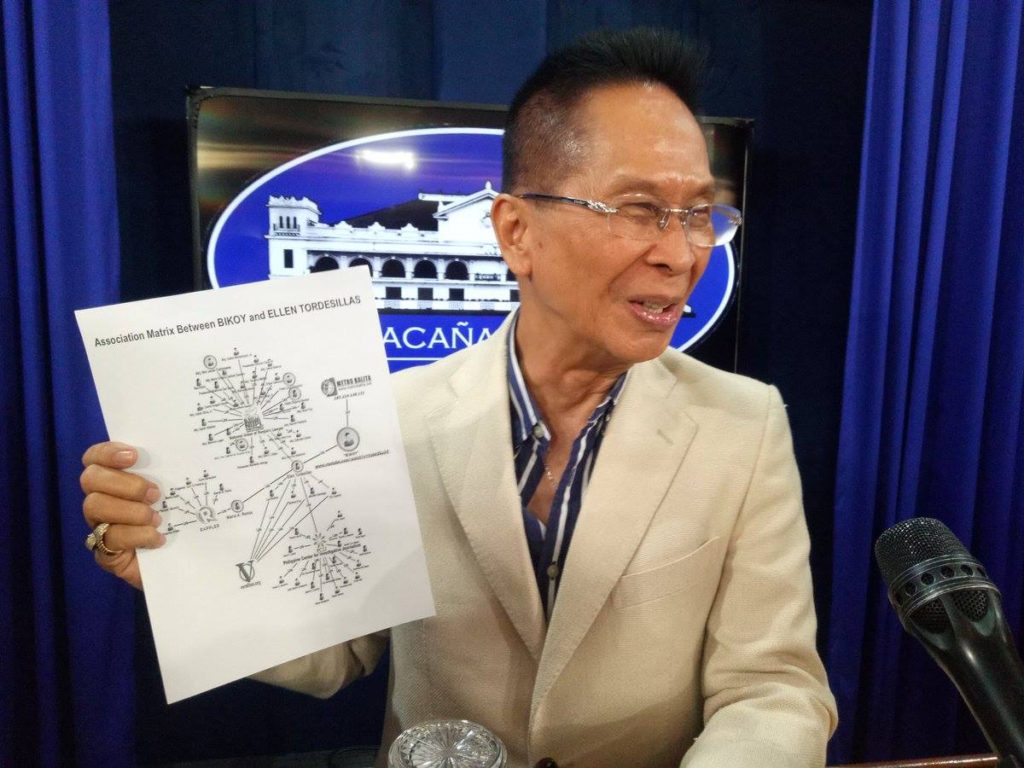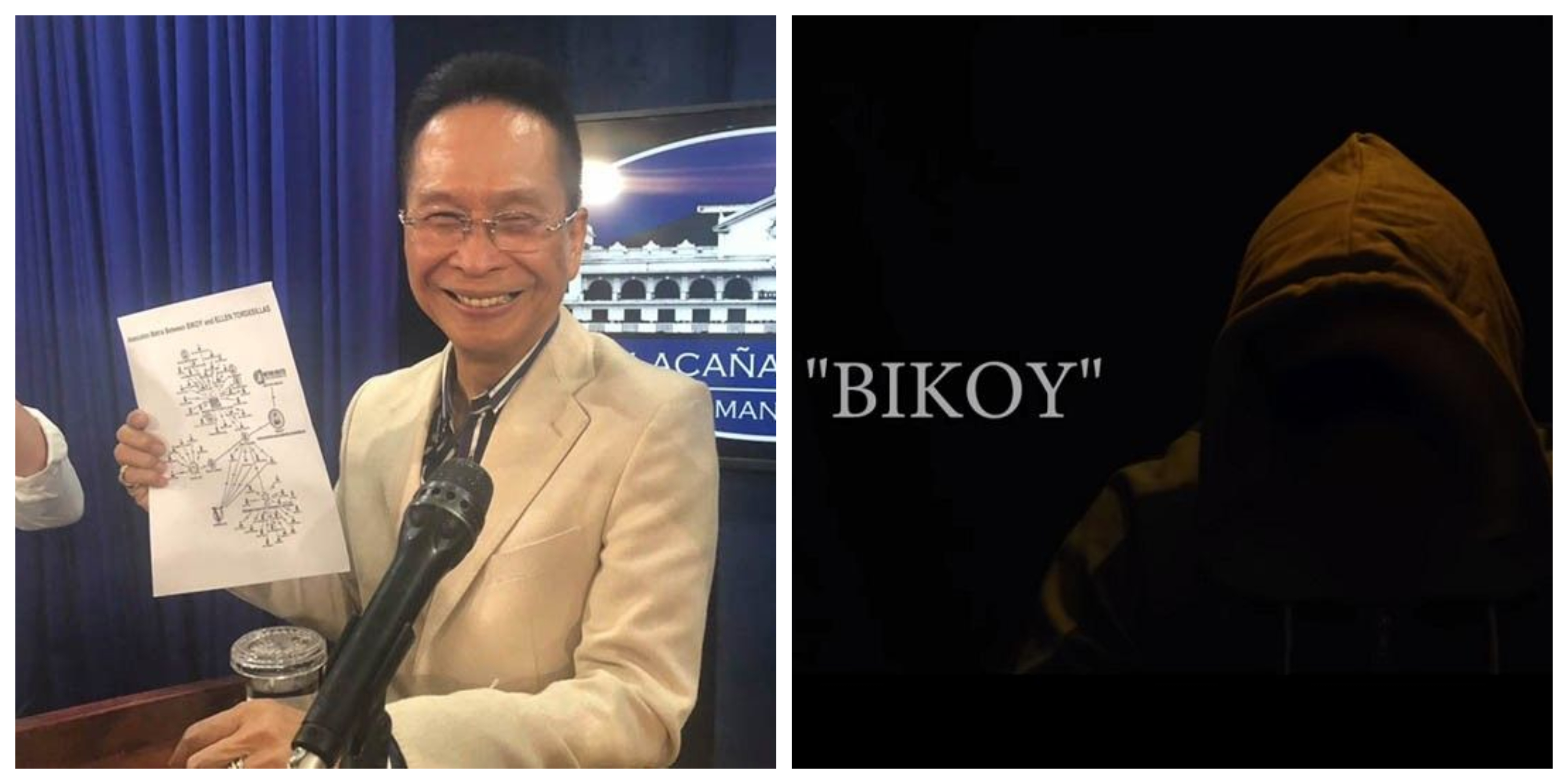After threatening to release intelligence reports that will implicate his political rivals for an alleged black propaganda against him, allies of President Rodrigo Duterte’s has bared a “matrix” showing the link between an anonymous whistleblower and famed journalist (and critic) Ellen Tordesillas.
The Duterte-allied Manila Times newspaper released a document titled, the “Association Matrix Between BIKOY and ELLEN TORDESILLAS”, which shows a web of collaborators ranging from journalists to activist organizations. “Bikoy” is the codename of the anonymous whistleblower who released a series of viral videos linking members of the President’s family and staff are involved in the country’s drug trade.

The Philippine National Police (PNP) immediately dismissed those accusations as a mere “smear campaign” against the President, in time for the 2019 mid-term elections. Allies of the President also accused several “U.S.-funded websites” of being part of this campaign, which are allegedly intended to “destabilize” the Philippines.
Presidential Spokesperson Salvador Panelo corroborated that matrix published by Manila Times, saying that it came from an intelligence report to the President. He refused to divulge how the newspaper got hold of a copy before the Administration released it, however.
Panelo insisted that the matrix underwent “proper validation”, and that there is a genuine plot to overthrow President Duterte perpetrated by “enemies of the State”.
It is surprising that the matrix underwent validation, if we are to believe Panelo, given the numerous inaccuracies in it. It alleges that Inday Espina-Varona is a lawyer associated with the National Union of People’s Lawyers (NUPL), when in fact she is a journalist with the National Union of Journalists in the Philippines (NUJP).
Journalist Luz Rimban was named as a member of independent news website Vera Files, when in fact she had left as early as April 2018 – way before the emergence of the “Bikoy” videos. The Philippine Center for Investigative Journalism (PCIJ), another entity named in the matrix, also clarified that five individuals linked to them from the document had resigned as early as 2018 also.

If the matrix had in fact been verified, it was validated by unreliable fact-checkers given that it is riddled with many wrong information.
Perhaps the death-knell for these claims by allies of the President came when the military themselves denied that they knew of any destabilization plot against the present Administration. That statement is contrasts that of the PNP, and even the Presidential Spokesperson himself, who all said there were plans to oust President Duterte.
What is striking about this disharmony between the intelligence gathering of the military, police and the Office of the President (OP) is that the latter received Php2.5 billion in intelligence funds in 2017 and 2018. That is an unusually high amount for an intelligence fund for the OP, and the incongruity of their intelligence reports shows that the exorbitant budget is not justified.
It also isn’t the first time that the executive branch released an inaccurate report that was dismissed by either the PNP or the Military.

In February this year, the Department of Interior and Local Government (DILG) released a list of 349 government officials who were supposedly funding the revolutionary group New People’s Army (NPA). Shortly, the PNP would admit it did not have concrete evidence proving those links – despite the list already been made public by the government agency.
In January, the PNP also declared that slain National Democratic Front (NDF) consultant Randy Malayao was slain by his own comrades after a feud. This was downplayed by the Military, who could not corroborate that press release by the Police.
When congressman Rodel Batocabe was assassinated by unknown gunmen in Albay late last year, the PNP claimed that the NPA were behind the attack citing their intelligence sources. However, that was strongly rebuked by Batocabe’s widow, Gertie, who said her late husband never received death threats from the rebel group, nor had any contact with them.
When the intelligence reports of the different government branches always contradicts with the security sector, can we still hold these so-called “revelations” to be reliable?
The Duterte Administration wanted to discredit the accusations of those viral “Bikoy” videos, but their counter-attack is lacking any credibility itself. Above all, can the President justify his massive intelligence budget given that many intelligence reports his office makes turns out to be irrelevant?
Why is the military and police struggling to coordinate their intelligence gathering, to a point where their statements end up contradicting each other’s? These two agencies are tasked to provide us with security, and yet both fail one of their core mandates of harnessing intelligence reports.
With that in mind, can we ever trust another intelligence report given out by our present administration?

